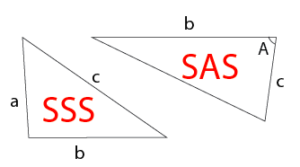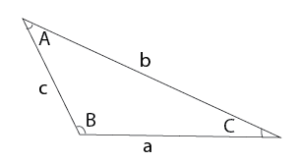When do you use the Sine Law?
You use the sine law when you want to find a missing side or a missing angle in any triangle (as in, the triangle does not need to be a right angled triangle).
The only triangles when you cannot use the sine law is in the following cases:
Side Side Side (SSS) where all of the sides are known and you do not know any of the angles.
Side Angle Side (SAS) where you know the angle which lies in between two known sides.

What is the Sine Law?
For any triangle with angles A, B and C and side lengths a, b and c, as in the following diagram:

the Sine Law states that:
That way of writing the Sine Law is especially helpful when calculating angles.
The Sine Law can also be written as:
This way of writing the Sine Law is especially helpful when calculating the side lengths.
Proof of the Sine Law
Let us split the triangle so that we have a “height” line perpendicular to the base (also known as the altitude of the triangle), as in the the figure below:

Notice:
and
Solving for h in each case, we get
and
Since they are both equal to h, we can equate the expressions as follows:
Dividing both sides by ac, we get
If we repeat this process with the remainder of the sides, we will arrive at our formula.